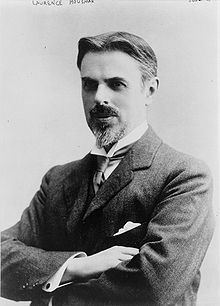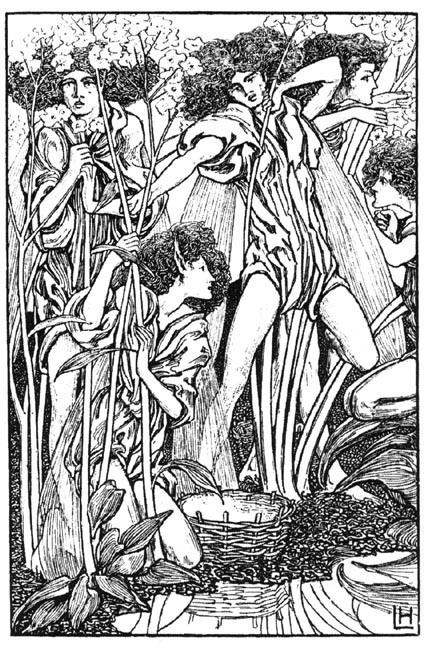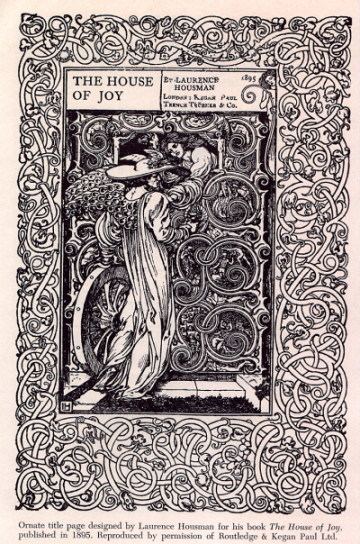Name Laurence Housman Role Playwright | Movies Prunella | |
 | ||
Died February 20, 1959, Street, United Kingdom Siblings A. E. Housman, Clemence Housman Books An Englishwoman's Love‑letters, The Blue Moon, The Field of Clover, Little Plays of St Francis: A, The unexpected years Similar People Clemence Housman, A E Housman, Christina Rossetti, Harley Granville‑Barker, Maurice Tourneur | ||
➿ Top 18 Quotes of Laurence Housman - Playwright
Laurence Housman (; 18 July 1865 – 20 February 1959) was an English playwright, writer and illustrator.
Contents
- Top 18 Quotes of Laurence Housman Playwright
- Popular Videos Laurence Housman
- Early life
- Illustrating
- Writing
- Activism
- Later life
- References

Popular Videos - Laurence Housman
Early life

Laurence Housman was born in Bromsgrove, Worcestershire, one of seven children who included the poet A. E. Housman and writer Clemence Housman. In 1871 his mother died, and his father remarried, to a cousin. After education at Bromsgrove School, he went with his sister Clemence to study art at the Lambeth School of Art and the Royal College of Art in London.
Illustrating

He first worked as a book illustrator with London publishers, illustrating such works as George Meredith's Jump to Glory Jane (1892), Jonas Lie's Weird Tales (1892), Christina Rossetti's Goblin Market (1893), Jane Barlow's The End of Elfintown (1894) and his sister's Were-wolf (1896) in an intricate Art Nouveau style. During this period, he also wrote and published several volumes of poetry and a number of hymns and carols.
Writing

When his eyesight began to fail, he turned more and more to writing. Housman's first literary success came with the novel An Englishwoman's Love-letters (1900), published anonymously. He then turned to drama with Bethlehem (1902) and was to become best known and remembered as a playwright. His other dramatic works include Angels and Ministers (1921), Little Plays of St. Francis (1922) and Victoria Regina (1934) which was even staged on Broadway. Housman's play, Pains and Penalties, about Queen Caroline, was produced by Edith Craig and the Pioneer Players.
Some of Housman's plays caused scandals because of depiction of biblical characters and living members of the Royal House on stage, and many of them were only played privately until the subsequent relaxation of theatrical censorship. In 1937 the Lord Chamberlain ruled that no British sovereign may be portrayed on the stage until 100 years after his or her accession. For this reason, Victoria Regina could not be staged until the centenary of Queen Victoria's accession, 20 June 1937. This was a Sunday, so the premiere took place the next day.
Housman also wrote children's fairy tales such as A Farm in Fairyland (1894) and fantasy stories with Christian undertones for adults, such as All-Fellows (1896), The Cloak of Friendship (1905), and Gods and Their Makers (1897).
A prolific writer with around a hundred published works to his name, his output eventually covered all kinds of literature from socialist and pacifist pamphlets to children's stories. He wrote an autobiography, The Unexpected Years (1937), which, despite his record of controversial writing, said little about his homosexuality.
After his brother's death in 1936, he was made A. E. Housman's literary executor and over the next two years brought out further selections of poems from his manuscripts. The manner of editing these has subsequently been deprecated: "The text of many poems was misrepresented: poems not completed by Housman were printed as though complete; versions he cancelled were reinstated; separate texts were conflated; and many poems were mistranscribed from the manuscripts.”
Activism
Housman held what for the time were controversial political views. He was a committed socialist and pacifist and founded the Men's League for Women's suffrage with Henry Nevinson and Henry Brailsford in 1907. He was also a member of the British Society for the Study of Sex Psychology and the Order of Chaeronea.
In 1909, Laurence, with his sister Clemence founded the Suffrage Atelier, an arts and crafts society who worked closely with the Women's Social and Political Union and Women's Freedom League. They encouraged non-professional artists to submit work, and paid them a small percentage of the profits. In 1911 the Anti-Suffrage Alphabet, written by Housman and edited by Leonora Tyson, was published in London.
In 1945 he opened Housmans Bookshop in Shaftesbury Avenue, London, founded in his honour by the Peace Pledge Union, of which he was a sponsor. In 1959, shortly after his death, the shop moved to Caledonian Road, where it is still a source of literature on pacifism and other radical approaches to living.
Later life
After World War I, Laurence and his sister Clemence left their Kensington home and moved to the holiday cottage which they had previously rented in the village of Ashley in Hampshire. They lived there until 1924, when they moved to Street, Somerset, where Laurence lived the last 35 years of his life.
